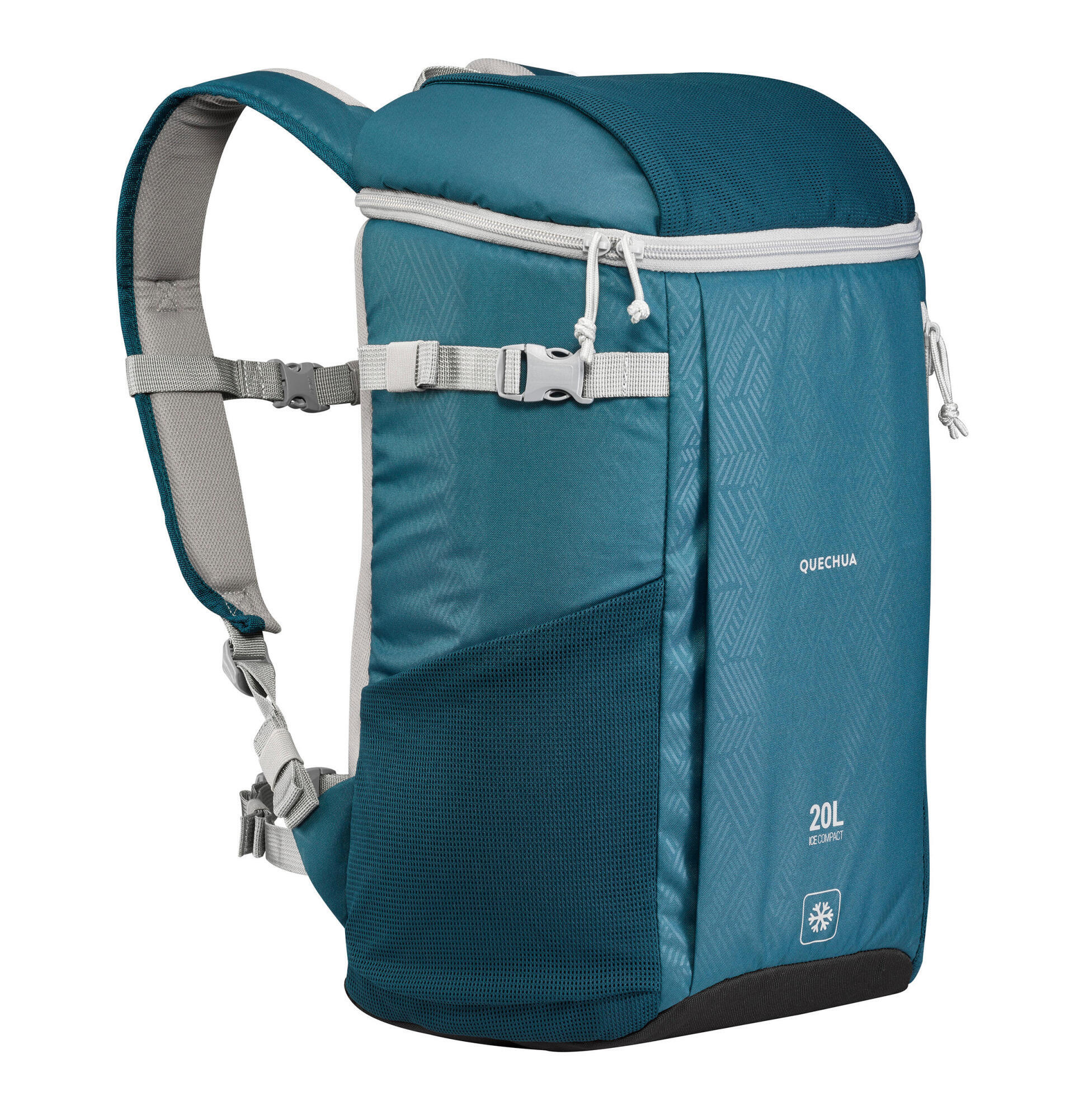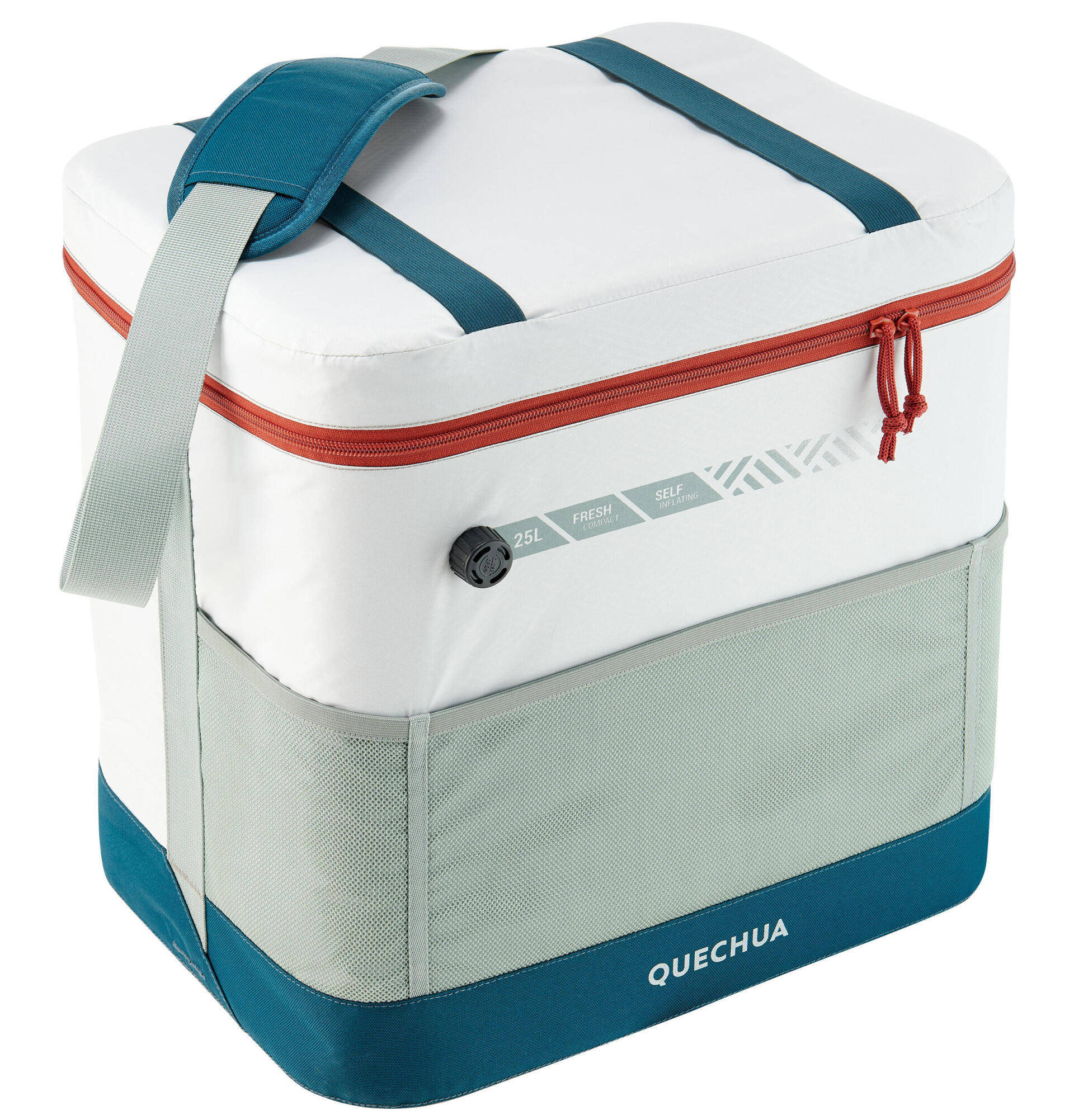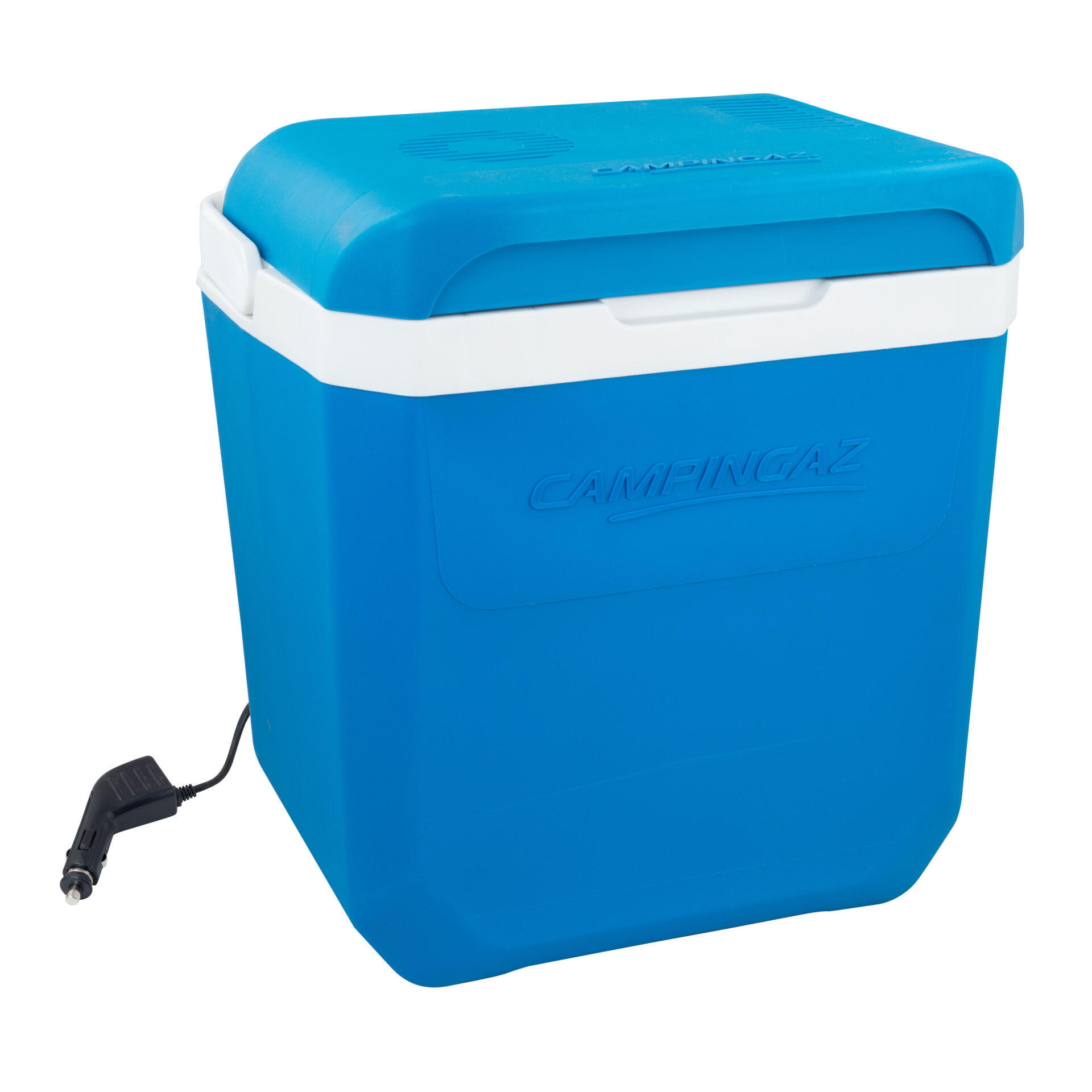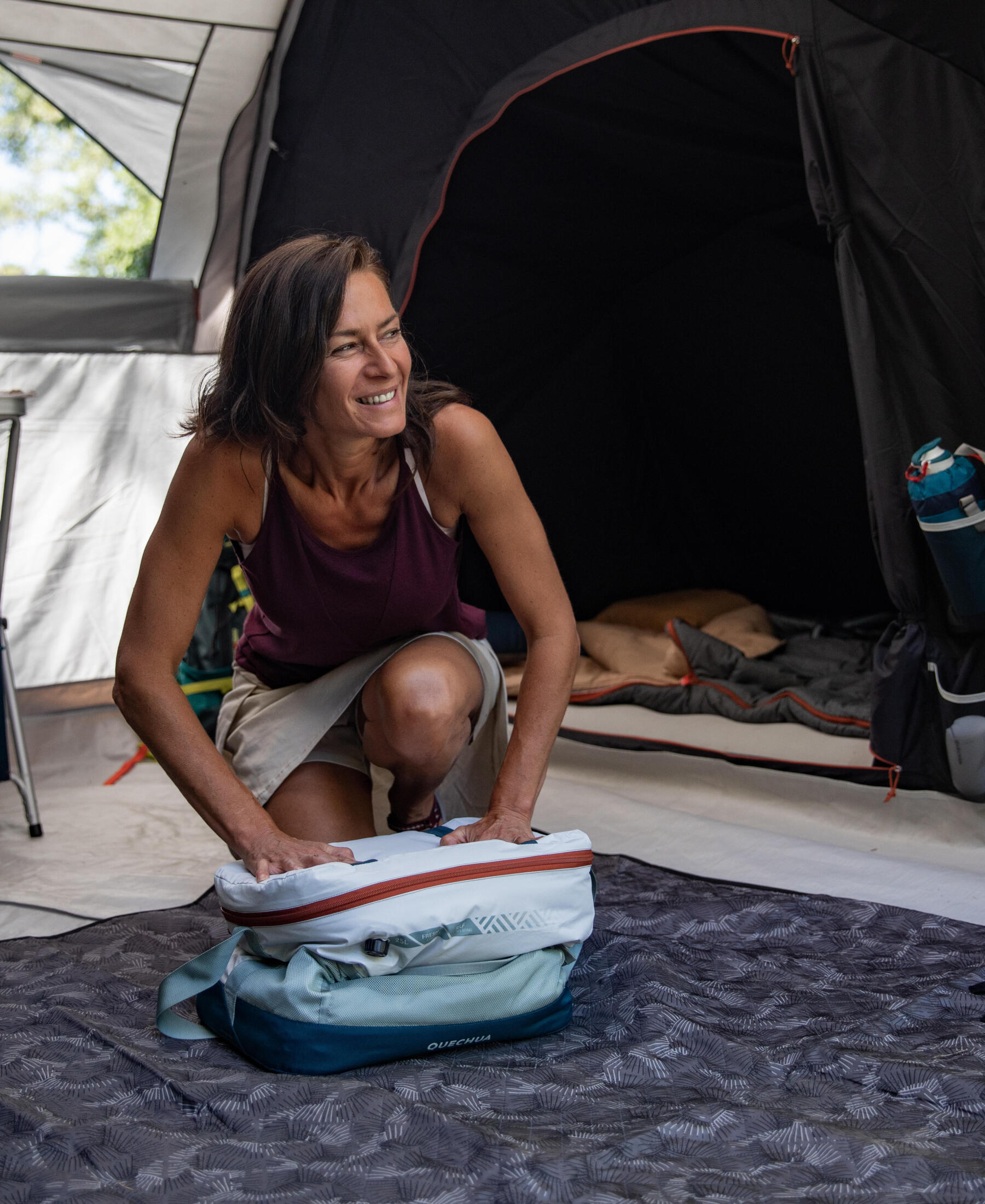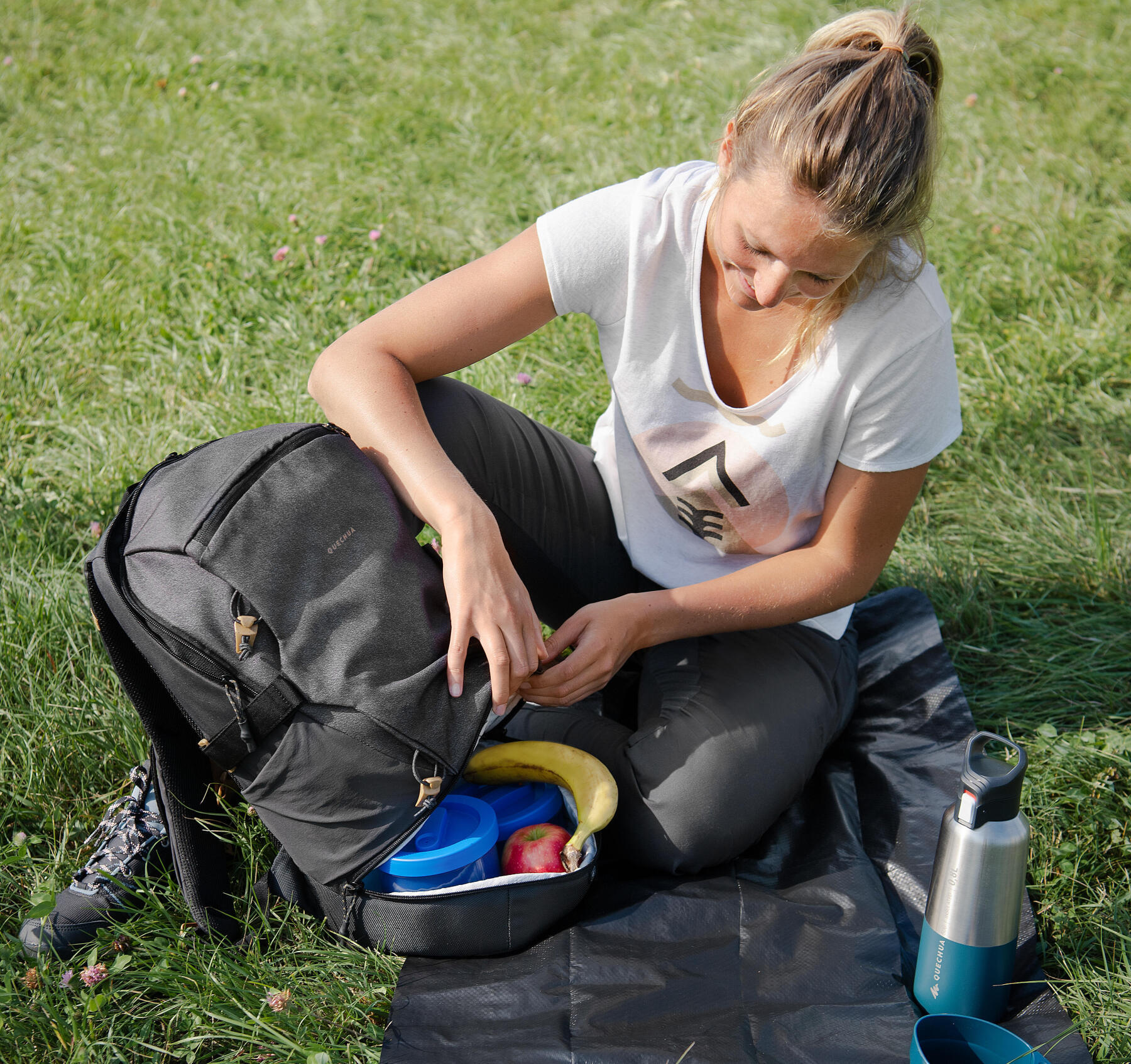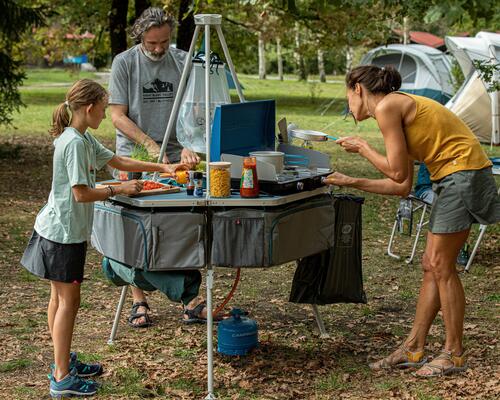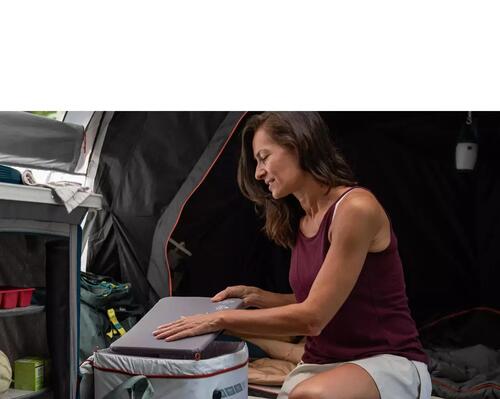Where do you place the freezer pack and the food in a cooler?
Let's start with freezer packs at the bottom of the isothermal backpack.
Good to know: big freezer blocks defrost slower than small freezer blocks.
Then place the most sensitive food, meat for example, the closest to the freezer packs. However, avoid placing dairy products, which risk freezing, next to freezer blocks/ice.
Hot air rises upwards and cold air goes downwards. Therefore store the food layer by layer, the least fragile at the top and what we want to keep longer, at the bottom.The good idea:store what you are going to eat the fastest at the top of the cooler.
Don't leave spare space in the cooler. If it is not full, add as many freezer packs as possible, or even a few ice cubes scattered on top of the food. Yes... more chemistry for you, but the more air there is, the faster ice melts. Stop when it starts to overflow.You must be able to close the cooler hermetically for the best insulation.
Lastly, think of keeping it in the shade, because the ice will melt 2 times slower.

